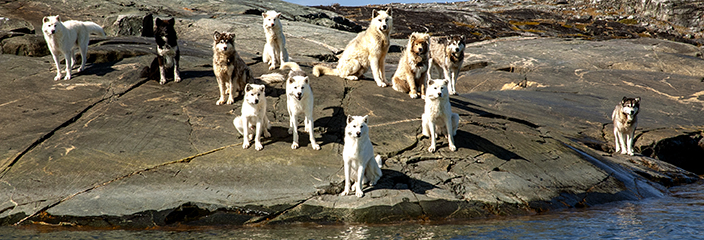By Corey Sandler, Destination Consultant Silversea Cruises
Málaga is the capital of the Costa del Sol, the Sun Coast, its very name brings to mind sweet repose, and sweet wine.
Both are conducive, I suppose, to great art, and it was here that Pablo Picasso was born and it is here that members of his family contributed pieces—some well-known and others quite obscure—to a small but rich museum.
MALAGA AND THE ALCAZABA
Above the bullring in Malaga is the Alcazaba, a Moorish fortification from the 8th to the 11th century. Alcazaba comes from the Arabic al-qasbah, meaning the citadel, and this is the best-preserved example in Spain.
RONDA
About an hour west of Málaga in the inland hills is Ronda. Ronda was first settled by the early Celts, but what you see today is the result of later Roman and Moorish rulers. Catholic Spain took control of the town in 1485, during the Reconquista.
Ronda is in a very mountainous area about 2,500 feet above sea level (750 meters) (2,500 feet). The Guadalevín River bisects the city with the steep El Tajo gorge.
Three bridges cross El Tajo: the Roman, the Old, and the New. All of them are old.The Puente Romano (the Roman Bridge, also known as the Puente San Miguel), dates from Roman times at least one thousand years ago. The Puente Viejo (“Old Bridge”, also known as the Puente Arabe or “Arab Bridge”) is a mere four centuries old, built in 1616.
The Puente Nuevo (New Bridge) was begun in 1751 and took until 1793 to complete. This is the tallest of the bridges, towering 390 feet or 120 meters above the canyon floor. There is a chamber beneath the central arch that was used as a prison. During the Spanish Civil War of 1936 to 1939, both sides were alleged to have used the chamber to torture prisoners, killing some by throwing them to the rocks below.
Another important site in Ronda is the 1784 Plaza de toros de Ronda, the oldest bullfighting ring still in use in Spain. The partially intact baños árabes (“Arab baths”) below the city date from the 13th and 14th centuries.
Ernest Hemingway spent many summers in Ronda’s old town quarter, La Ciudad. Hemingway’s For Whom the Bell Tolls describes the murder of Nationalist sympathizers early in the Spanish Civil War.
Another frequent visitor was actor and director Orson Welles. About Ronda, Welles said, “A man is not from where he is born, but where he chooses to die.” Welles’ ashes were scattered in the Ronda bull-ring in 1985.
A MALAGA and GRANADA ALBUM. Photos by Corey Sandler


Downtown Malaga, fronted by the cruise terminal. Photos by Corey Sandler


The Alcazaba of Malaga. Photos by Corey Sandler

Inside the Malaga Cathedral. Photos by Corey Sandler




Some of the glories of Granada. Photos by Corey Sandler




The bullring, the gorge, and a palacio in Ronda. Photos by Corey Sandler
GRANADA
One of Spain’s most spectacular and famous cities is Granada, just under two hours to the northeast of Malaga. Granada sits at the base of Sierra Nevada mountains, at the confluence of three rivers.
The city has been inhabited for thousands of years. The original settlers were perhaps Ibero-Celtics. Then came Phoenicians, Carthagenians, and Greeks. By the 5th century BC, the Greeks had established a colony they called Elybirge.
The heraldic symbol of Granada is the pomegranate: Granada in Spanish. A Jewish community was established outside of the city, called “Gárnata al-yahud” (Granada of the Jews). In 711, the Jewish community worked with Moorish forces to take the city, which became known as Ilbira or Elvira.
The city became the capital of a province of the Caliphate of Cordoba. The city was mostly destroyed in war in 1010. When it was rebuilt the Gárnata was incorporated into the city, and from that we have the modern name of Granada.
In January 1492, the last Muslim sultan in Iberia surrendered control of Granada to Ferdinand and Isabella, Los Reyes Católicos (“The Catholic Monarchs”.)
The Alhambra, Arabic for “the red one”, or the red fortress, was built in the mid-14th century. It originally was the residence of the Muslim rulers of Granada and their court. With the reconquest by the Spaniards, it became a Christian palace.
Within the Alhambra, a new palace was erected in 1527 by Charles V, the Holy Roman Emperor. After falling into disrepair, the Alhambra was “rediscovered” in the 19th century. It is now one of Spain’s major tourist attractions.
It exhibits the country’s most famous Islamic architecture, together with Christian 16th-century and later improvements. Like a house that has been built, rebuilt, and expanded dozens of times over centuries, the Alhambra is a bit of an architectural mess.
That’s actually one of its charms
All photos by Corey Sandler. All rights reserved. If you would like to purchase a high-resolution image, please contact me.
————————————————————————-
Now available, the revised Second Edition of “Henry Hudson Dreams and Obsession” by Corey Sandler, for the Amazon Kindle. You can read the book on a Kindle device, or in a Kindle App on your computer, laptop, tablet, or smartphone.
Here’s where to order a copy for immediate delivery:
http://www.amazon.com/dp/B00IA9QTBM

Henry Hudson Dreams and Obsession: The Tragic Legacy of the New World’s Least Understood Explorer (Kindle Edition)












































































































































































